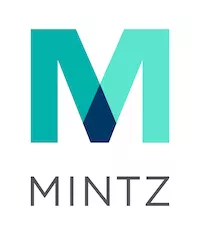Earlier this month the House Energy and Commerce Committee's subcommittee on Government Oversight and Investigations held its second hearing on the 340B Drug Discount Program. The hearing followed on the heels of a July 18th hearing in which officials from the Health Resources and Services Administration (HRSA), the Government Accountability Office (GAO), and the Department of Health and Human Services Office of Inspector General (HHS-OIG) testified about the challenges faced in overseeing the 340B Program.
This hearing was called Examining How Covered Entities Utilize the 340B Drug Pricing Program. Representatives of five different covered entities were asked to address three questions in their testimony:
- How much do 340B Covered Entities save when purchasing 340B drugs?
- How are those savings tracked?
- How are those savings used?
However, it was the follow-up questions from subcommittee and committee members that may indicate where Congress is headed in legislating changes to the 340B Program.
Covered Entity Testimony
The committee asked a cross-section of covered entity representatives to testify: one from a Federally Qualified Health Center (FQHC) in South Carolina, one from a Ryan White HIV/AIDS Program grantee based in the Midwest, one from a Disproportionate Share Hospital (DSH) system that serves rural areas of North Carolina, and two from large regional DSHs that largely serve urban populations in Maryland and Georgia.
All of the witnesses acknowledged that their entities save on drug costs through participation in the 340B Program. The three DSH representatives testified that because of 340B savings, they can provide considerable uncompensated care to patients. They also testified about additional services they are able to provide, such as treatment centers for abuse victims, wrap-around services for those with chronic conditions, and preventative health screenings. The FQHC and the Ryan White Program representatives testified that unlike the DSHs, their use of 340B income is restricted to funding pharmacy services for their patients.
Six Key Follow-Up Questions
Participating legislators uniformly voiced support for the 340B Program and noted that covered entities appeared to be appropriately using their savings to expand access to care. However, follow-up questions probed areas of concern. While dozens of questions were posed, six appear to be key:
1. Are 340B "savings" calculated in a consistent manner?
It appears there are inconsistencies in how covered entities calculate 340B savings. Of the testifying witnesses, three stated that their facilities determine 340B savings by calculating the difference between the actual 340B purchase price and the Group Purchasing Organization (GPO) purchase price. One covered entity defined savings as the net margin after the 340B drugs were dispensed/reimbursed. And another covered entity described its savings as being based on its contract pharmacies' costs.
2. Are 340B savings earmarked for particular programs, and what would be the effect on those programs if the amount of savings was reduced?
The FQHC and Ryan White representatives testified that based on HRSA regulations, they are limited in how they can use income derived from 340B; 340B revenues are used to fund pharmacy costs for their patients and are appropriately reported in their budgets and financial reporting to HRSA. Loss of 340B revenue would reduce those pharmacy services.
The DSH representatives acknowledged that, in practice, 340B revenue is a line item in budgeting and not specifically earmarked. However, they noted that the revenue is what helps fund charity care and a variety of "additional" services earlier described; reduction in 340B revenue would necessitate reductions in the level of charity care provided and possibly eliminate additional programs such as wrap-around services for those with chronic conditions and preventative health screenings. That testimony led to a rebuke from committee Chair Greg Walden, who said he was surprised that the facilities would not first consider rolling back overhead costs, reducing executive bonuses, or curtailing building expansions, but would immediately roll back patient care if 340B revenue was decreased.
3. How do DSHs measure "charity" or "uncompensated" care?
The three DSH representatives all stated that the amount of charity or uncompensated care they provide far outpaces 340B Program revenue. But committee Chair Walden questioned how that "charity" or "uncompensated" care is measured. Does the amount reported by each facility actually represent the cost of the care provided to uninsured individuals who are not billed for the care? Or does the stated amount include care provided to insured individuals, including government beneficiaries, where reimbursement rates fall below the billed amount for the services provided. He received no detailed responses.
4. Describe CEO salaries, and facility assets/net income?
Representative Tim Walberg asked the witnesses to confirm information about their CEO's reported salary (ranging from a low of $190,000 to a high of $2.8 million), and their entity's reported net assets and net income. For the three DSHs, net assets ranged from $1 billion to $1.4 billion and net income ranged from $81 million to $157 million.
5. Do uninsured or self-pay patients get 340B drugs at the 340B discount prices? And to what extent do covered entities refer uninsured patients to patient assistance programs?
Representative Ryan Costello asked the witnesses whether uninsured patients treating at their facilities can access 340B drugs at or below the 340B discount prices. The FQHC and Ryan White representatives indicated that under applicable HRSA rules, they must make 340B drugs available to their self-pay patients. The three DSH representatives testified that their facilities each operate Medication or Pharmacy Assistance Programs to facilitate access to drugs for qualified patients.
Representative Costello followed up by asking the witnesses if they also connected patients to charitable patient assistance programs (PAPs) offered by manufacturers of specific drugs, or offered by third party charities that help patients afford the cost of care, including drug costs. All of the witnesses indicated that facility staff do help patients access PAPs which offer medication assistance, but could not provide specific information on the numbers of patients who receive PAP assistance.
6. Have DSHs leveraged 340B revenue through acquisition of suburban outpatient oncology clinics?
Multiple questions were raised regarding urban DSH purchases of suburban outpatient oncology clinics, which allowed the hospitals to dispense expensive oncology drugs obtained at 340B discounts to the largely insured patients of these clinics.
In response to questions raised by Representative Carter, one of the DSH representatives stated that the purchase of oncology clinics was part of a strategy to maximize integrated care for its patients. Representative Brooks questioned whether because of the purchases, patients were now charged facility fees for treatment received at the clinics. And Representative Collins noted that a hospital qualifies for DSH status based on its inpatient patient mix, meaning that the purchase of suburban outpatient clinics has no impact on a hospital's DSH status.
What Wasn't Asked
Interestingly, there was only one fleeting reference to the CMS proposal to reduce Medicare Part B reimbursement for 340B drugs, scheduled to go into effect on January 1, 2018. However there were multiple references to concerns about 340B contract pharmacies, and indications that there would be a third congressional hearing on 340B to address those concerns.
What it Mean?
It appears that there will be at least one more 340B hearing before we may see any proposals for legislation.
If there is legislation, one thing is clear: there is bipartisan support for continuing the 340B Program. But the questions asked in this hearing, combined with the testimony provided at the July 18th hearing, appear to indicate some consensus for changes to the 340B Program, including imposing covered entity reporting requirements for 340B savings, a standardized methodology for calculating those savings, and covered entity reporting requirements on how those savings are used.
The content of this article is intended to provide a general guide to the subject matter. Specialist advice should be sought about your specific circumstances.
[View Source]

